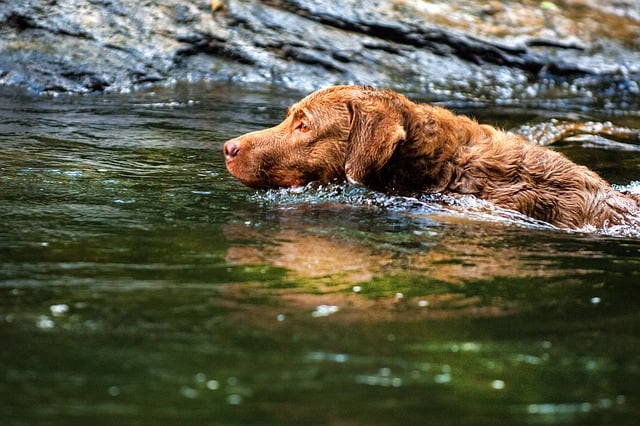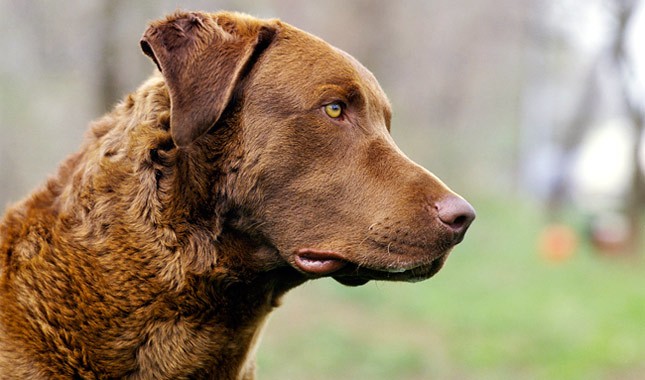Common nicknames: Chessie, CBR, Chesapeake.
The Chesapeake Bay Retriever is a large-sized breed of dog belonging to the Retriever, Gundog, and Sporting breed groups. Members of the breed may also be referred to as a Chessie, CBR, or Chesapeake. The breed was developed in the United States Chesapeake Bay area during the 19th century. Historically used by area market hunters to retrieve waterfowl, pull fishing nets, and rescue fishermen, it is primarily a family pet and hunting companion. They are often known for their love of water and their ability to hunt. It is a medium to large-sized dog similar in appearance to the Labrador Retriever. The Chesapeake has a wavy coat, rather than the Labrador’s smooth coat. They are described as having a bright and happy disposition, courage, willingness to work, alertness, intelligence, and love of water as some of their characteristics.
Appearance

Distinctive features include very clear eyes, of yellowish or amber hue, hindquarters as high or a trifle higher than the shoulders, and a double-coat that tends to wave on shoulders, neck, back, and loins. The waterproof coat feels slightly oily and is often associated with a slight musky odour. Three basic colours are generally seen in the breed: brown, which includes all shades from a light to a deep dark brown; sedge, which varies from a reddish yellow through a bright red to chestnut shades; and dead grass in all its shades, varying from a faded tan to a dull straw colour. The breed standard states that white may also appear but it must be limited to the breast, belly, toes, or back of the feet. The head is round and broad with a medium stop and muzzle. The lips are thin, and the ears are small and of medium leather. The forelegs should be straight with good bone. The hindquarters are especially strong and the toes webbed since excellent swimming ability is important for the Chesapeake. This breed is also known for its large and powerful chest, used to break apart ice when diving into cold water while duck hunting.
